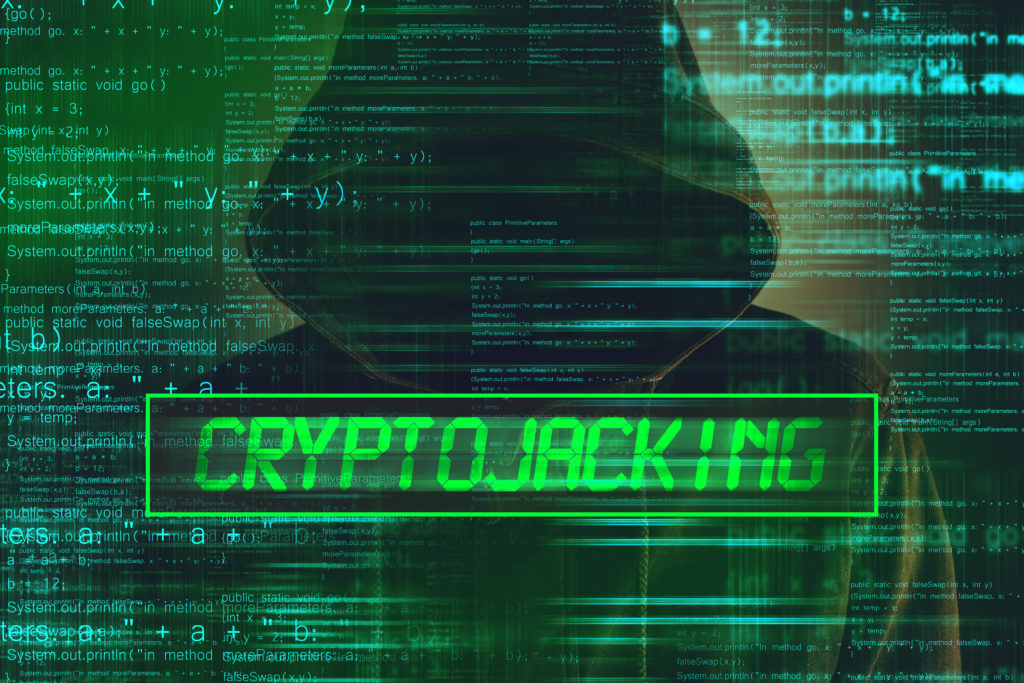How to protect yourself from Cryptojacking.
A new form of cybercrime, Cryptojacking exploits the resources of a computer without the knowledge of its owner.

What is Cryptojacking?
The term cryptojacking refers to a new form of malicious attack that consists of mining cryptocurrency on the computers and mobile devices of third parties without their knowledge. It is nothing more or less than a computer hack allowing cryptocurrency miners-hackers to exploit the hardware resources of many desktop PCs, laptops and smartphones to achieve their goals.
Cryptohackers have indeed discovered that the computing power of their dedicated computers was no longer sufficient to remain competitive and obtain cryptocurrency coins, not to mention the electricity costs generated. Instead of sticking to their own hardware resources through dedicated computers, they illegally use those of third parties.
Indeed, to mine virtual currency, a complex process is implemented, including the calculation of puzzles. This requires the use of a powerful mining computer. The honest crypto active wants to increase the computing power of his computer by investing a lot of money in hardware. The cryptohacker opts for hacking other people’s machines in order to make a profit.
What are the different types of mining malware?
Depending on how foreign computers or mobile devices are used for cryptojacking, the following categories of dangerous malware are distinguished:
Cryptojacking via Trojans/Adware
Systems that become infected through a cryptojacking Trojan via infected sites, files, downloads, or other means are used to make their CPUs and GPUs available for mining. Since they bypass antivirus programs and the task manager, they usually go unnoticed for a long time.
Cryptojacking via JavaScript/Browsers
Here the mining code is hidden in scripts, e.g. in the form of code snippets of the Coinhive program, within websites and executed by the browser. Website visitors unwittingly make their computing power available for mining, probably even after continuing to browse outside the site, which is possible via hidden pop-ups and tabs.
Since streaming portals keep their users on the same page for a long time, they are also affected by mining codes nested in video players or disguised cryptojacking ads.
How do we detect cryptojacking?
The goal of cryptojacking is to hide in the background for as long as possible to mine as many cryptocurrencies as possible. Malware is designed to use only the power it needs and therefore goes largely unnoticed.
Symptoms of an Infection
There are some signs that your computer has been infected with cryptojacking. Here are some examples:
- High processor (CPU) usage
- The device is slower and noisier
- It overheats
- The battery drains faster
- Increase in the electricity bill
If you notice any of the symptoms above, this does not necessarily mean that your device is mining crypto without your knowledge. Open Task Manager on PC or Activity Monitor on Mac to check which programs are using your device’s computing power.
It is recommended to run a system check using anti-virus software. Most cybersecurity programs are able to recognize, detect, and quarantine cryptojacking software.
For people who run websites, you can look for suspicious lines in the HTML code or turn to programs that scan the site for malicious code.
How can you protect yourself against cryptojacking?
Ultimately, cryptojacking software is not that different from other types of malware. Here are the basics to avoid being infected by cryptojacking:
- Install antivirus and malware protection software and keep them up to date.
- Use ad blockers in your browser.
- Avoid websites known to run cryptojacking scripts.
- Disable Javascript in your browser.
- Protect server farms with cybersecurity systems.
If you’re an active crypto trader, you might want to check out our article on How to Use a VPN for Crypto Transactions as well.
Choose to use a VPN on your devices. VuzeVPN is available for Windows, Mac, iOS, Chrome and Edge Extension and has a 30-day money back guarantee, for you to test its features.

